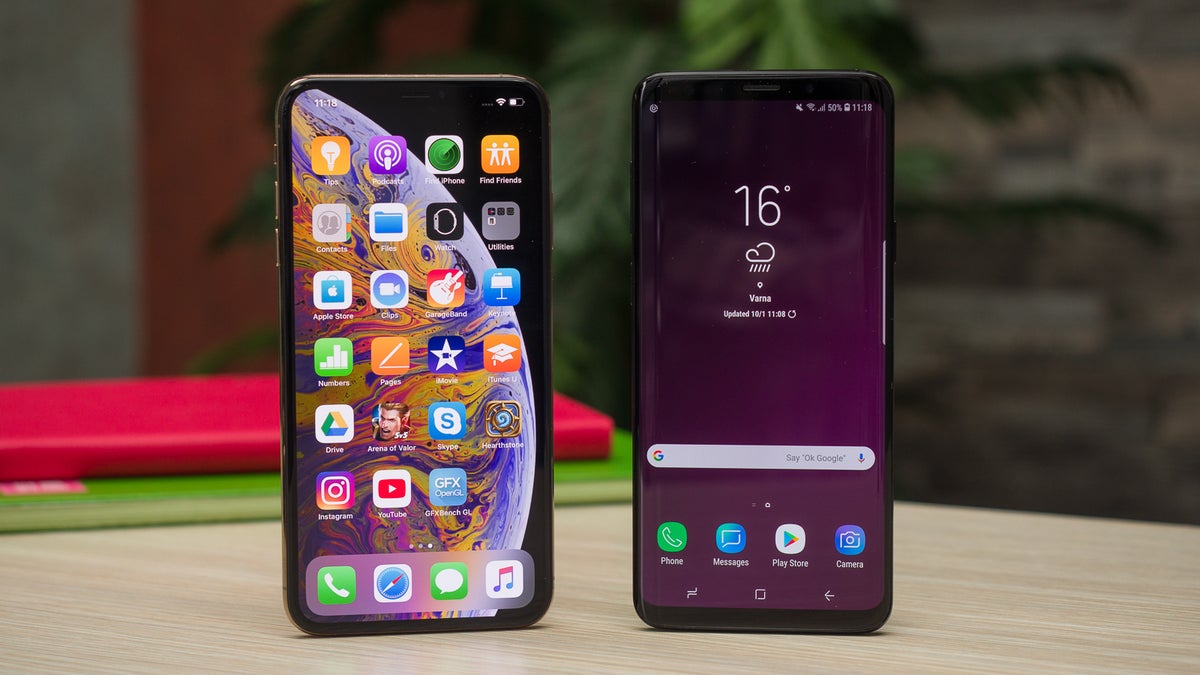Apple goes for aesthetics, Samsung adds symmetry: display engineer explains why thin chins are bad

A recent brouhaha over the broken screen of a Pixel 3 XL has brought along the most illuminating explanation on why some manufacturers go with thick over thin chins in their phone designs. The Pixel 3 XL in question got a few permanent pink lines running from the bottom of the display which it allegedly received from a short foot-long drop.
I’m not about to make an entire video, but RIP this Pixel 3 XL. My screen just got this permanent pink line of dead pixels down the middle out of nowhere. Wtf pic.twitter.com/CcbyEmE2G8
— Marques Brownlee (@MKBHD) 24 октомври 2018 г.
The Reddit thread dedicated to the issue has turned into the oh-so-rare quality discussion on why screens are prone to do that after a self-proclaimed Apple phone display engineer entered the fray.
While he tipped the audience on some known facts - namely that OLED screens bend towards the bottom to fuse with the connector that drives their pixels. This fragile bond is extremely prone to having traces that run screen lines detach upon bottom impact with the ground, especially if the chin is thin. The pink lines that form are the result of said broken traces leaving pixels they command permanently on. The phenomenon even has a name in display engineer lingo - a VLD (vertical line defect).
Given that this 180-degree bottom bend is done on most OLED panels with plastic substrates like the ones most flagships are now using, everyone's OLED models are prone to VLDs, especially if they have thinner "chins," i.e. bottom bezels. When asked why isn't every OLED phone made with thick chins then, the purported Apple display engineer dished out the following fascinating answer:
That's a tough question. It has a lot to do with reliability concerns.. a thinner chin means the bend is closer to the frame, thus increasing the likelihood of a vertical line failure. Newer iPhones are extremely susceptible to the kind of failure that you see in this thread.
The thick chins you see on many phones has a lot to do with the values and goals of the company producing the phone. For example, Apple values the aesthetic, and is willing to sacrifice some drop reliability for it. Other companies may want to use that space for bigger chin speakers, or some other component.
Edit: Another example is what you see in Samsung phones. They can totally make the chin as thin as Apple does (our displays are made in Samsung factories). They don't do it for aesthetic purposes also. Since Samsung is opposed to the notch, they want to keep the bottom bezel the same thickness as the top one for aesthetic symmetry.
The thick chins you see on many phones has a lot to do with the values and goals of the company producing the phone. For example, Apple values the aesthetic, and is willing to sacrifice some drop reliability for it. Other companies may want to use that space for bigger chin speakers, or some other component.
Edit: Another example is what you see in Samsung phones. They can totally make the chin as thin as Apple does (our displays are made in Samsung factories). They don't do it for aesthetic purposes also. Since Samsung is opposed to the notch, they want to keep the bottom bezel the same thickness as the top one for aesthetic symmetry.
There you have it - Apple loves aesthetics and is willing to sacrifice some fragility for thinner bezels (no worries, the iPhone XR is safe), Samsung, on the other hand, as the only one among the top smartphone makers that don't have a notch-y phone, prefers a frontal symmetry making Notes and Galaxies less prone to VLDs.
Such Samsung design concept may even be brought to the extremes when the Galaxy S10 lands, as rumors are swirling that it will have even thinner top and bottom bezels than the S9, achieved by tucking the front camera within a tiny hole in the display itself instead of the top bezel.
We can't wait to see if such a new design paradigm will indeed go to fruition in a potential hit phone like the Galaxy S10, as this could be the next great thing in the quest to the "all-screen" phone after sliders.
source: Kymbb (Reddit)
Follow us on Google News














Things that are NOT allowed:
To help keep our community safe and free from spam, we apply temporary limits to newly created accounts: